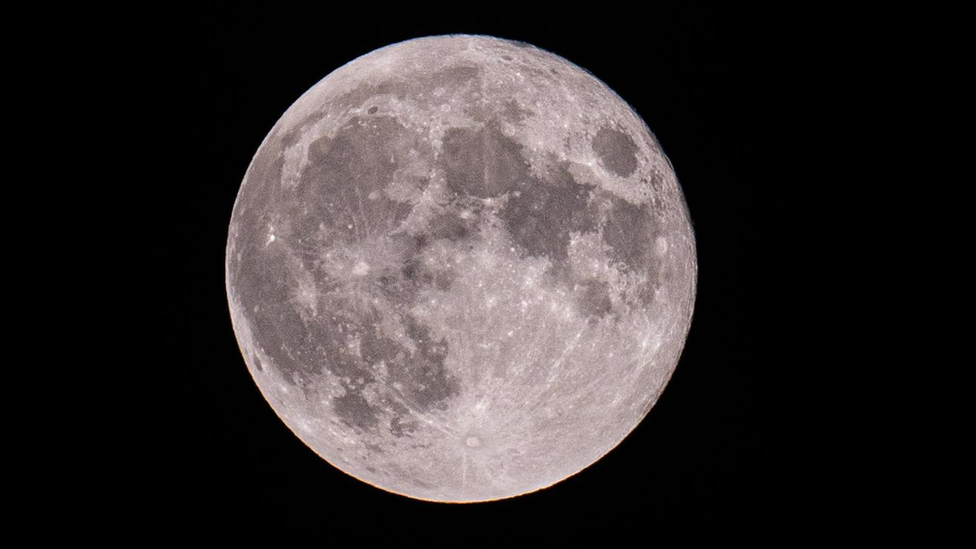Does the Moon affect our weather?
- Published

The Moon as captured by 91热爆 Weather Watcher Coastal JJ in Selsey, West Sussex
Earth's natural satellite, the Moon, plays a subtle but important role in the weather and our seasons. Some scientists even say that it was the Moon that made life possible on Earth in the first place.
The Moon influences our weather and according to Dr Gregory Brown of Royal Observatory Greenwich: "At the poles the full Moon can cause temperatures to be around half a degree Celsius higher than at new Moon."
91热爆 Weather Watcher Pete Ivin in Sunderland took this perfectly framed shot of the Moon behind a lighthouse
The Moon's orbit around the Earth takes roughly 27 days. As it circles us it pulls on the Earth, slowing our planet's rotation - a process known as tidal braking.
The Moon also steadies the Earth as it spins on its axis, helping to give us a stable climate. Without it the Earth would wobble more erratically and this would result in the seasons, days and nights all looking very different.
91热爆 Weather Watcher Frances B in Guildford saw the Moon behind hazy cloud
The Moon and our tides
The Moon's most obvious influence is on our tides. Ocean tides are caused by the gravitational pull between the Earth and the Moon. Where oceans face the moon the water swells and builds up, creating a high tide, in what is called a tidal bulge.
Meanwhile on the opposite side of the planet the Earth is pulled towards the Moon more than the ocean is, which in turn causes another high tide.
As the Moon moves around the planet the tides move with it, causing two high and low tides every day.
This bright full Moon was captured by 91热爆 Weather Watcher Eta in Tynemouth, North Tyneside
Subtle changes in the lunar tidal cycle can even influence our ocean systems such as El Ni帽o and La Ni帽a, which in turn impact weather across the world.
Dr Brown explains how even small changes have an impact on the temperature and therefore, "the cycles of the Moon may well need to be included in wider atmospheric modelling".
So the Moon does affect our climate and without it our weather would be very different.
If you manage to get out and take a photo of the full Moon send us your photos to 91热爆 Weather Watchers.
- Published11 February
- Published7 November 2023